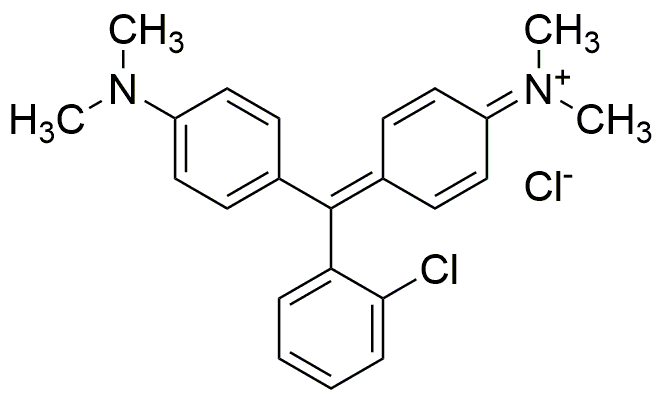Basic blue 1 is widely utilized in research focused on:
- Textile Industry: This dye is commonly used for coloring fabrics, providing vibrant shades that are resistant to fading, making it ideal for clothing and upholstery.
- Biological Staining: In laboratories, Basic blue 1 is employed as a staining agent in microscopy, helping to enhance the visibility of cellular structures in biological samples.
- Cosmetics: The compound is also found in certain cosmetic products, where it serves as a colorant, offering a bright and appealing hue while adhering to safety regulations.
- Paper Industry: It is used in the production of colored papers, contributing to the aesthetic quality of stationery and packaging materials.
- Environmental Monitoring: Basic blue 1 can be utilized in analytical chemistry for detecting and quantifying pollutants in water samples, aiding in environmental protection efforts.
General Information
Properties
Safety and Regulations
Applications
Basic blue 1 is widely utilized in research focused on:
- Textile Industry: This dye is commonly used for coloring fabrics, providing vibrant shades that are resistant to fading, making it ideal for clothing and upholstery.
- Biological Staining: In laboratories, Basic blue 1 is employed as a staining agent in microscopy, helping to enhance the visibility of cellular structures in biological samples.
- Cosmetics: The compound is also found in certain cosmetic products, where it serves as a colorant, offering a bright and appealing hue while adhering to safety regulations.
- Paper Industry: It is used in the production of colored papers, contributing to the aesthetic quality of stationery and packaging materials.
- Environmental Monitoring: Basic blue 1 can be utilized in analytical chemistry for detecting and quantifying pollutants in water samples, aiding in environmental protection efforts.
Documents
Safety Data Sheets (SDS)
The SDS provides comprehensive safety information on handling, storage, and disposal of the product.
Product Specification (PS)
The PS provides a comprehensive breakdown of the product’s properties, including chemical composition, physical state, purity, and storage requirements. It also details acceptable quality ranges and the product's intended applications.
Certificates of Analysis (COA)
Search for Certificates of Analysis (COA) by entering the products Lot Number. Lot and Batch Numbers can be found on a product’s label following the words ‘Lot’ or ‘Batch’.
*Catalog Number
*Lot Number
Certificates Of Origin (COO)
This COO confirms the country where the product was manufactured, and also details the materials and components used in it and whether it is derived from natural, synthetic, or other specific sources. This certificate may be required for customs, trade, and regulatory compliance.
*Catalog Number
*Lot Number
Safety Data Sheets (SDS)
The SDS provides comprehensive safety information on handling, storage, and disposal of the product.
DownloadProduct Specification (PS)
The PS provides a comprehensive breakdown of the product’s properties, including chemical composition, physical state, purity, and storage requirements. It also details acceptable quality ranges and the product's intended applications.
DownloadCertificates of Analysis (COA)
Search for Certificates of Analysis (COA) by entering the products Lot Number. Lot and Batch Numbers can be found on a product’s label following the words ‘Lot’ or ‘Batch’.
*Catalog Number
*Lot Number
Certificates Of Origin (COO)
This COO confirms the country where the product was manufactured, and also details the materials and components used in it and whether it is derived from natural, synthetic, or other specific sources. This certificate may be required for customs, trade, and regulatory compliance.


